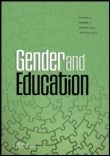 This article developed from collaboration between the authors in late 2008 when Kate was a visiting researcher at the University of Limerick, funded by the Irish Research Council for the Humanities and Social Sciences. At the same time the authors were collaborating in an eight-country study of the Women in Higher Education Management (WHEM) Network that was published in the UK and US in 2011 as Gender, Power and Management: A Cross-Cultural Analysis of Higher Education (eds. Barbara Bagilhole and Kate White). Building on those collaborations, we have continued to analyse the Irish and Australian data and presented papers at conferences in Gothenburg (2010) and at Amsterdam, Ottawa and Melbourne (2011). The Irish/Australian comparison is particularly apposite in view of the use of Australian higher educational policy and practice as an exemplar by the Irish government.
This article developed from collaboration between the authors in late 2008 when Kate was a visiting researcher at the University of Limerick, funded by the Irish Research Council for the Humanities and Social Sciences. At the same time the authors were collaborating in an eight-country study of the Women in Higher Education Management (WHEM) Network that was published in the UK and US in 2011 as Gender, Power and Management: A Cross-Cultural Analysis of Higher Education (eds. Barbara Bagilhole and Kate White). Building on those collaborations, we have continued to analyse the Irish and Australian data and presented papers at conferences in Gothenburg (2010) and at Amsterdam, Ottawa and Melbourne (2011). The Irish/Australian comparison is particularly apposite in view of the use of Australian higher educational policy and practice as an exemplar by the Irish government.
The focus on senior management (defined in this article as those at Dean level or above who are currently or who had been in senior management in Irish or Australian universities in the past five years) reflects the idea that ultimately those in such positions play a very important role in shaping the cultural context of their universities. However their own power can be seen as limited by government policy and by the wider societal context characterised by neo- liberalism, globalisation and the massification of higher education. This led to discussions about the nature and extent of Presidential/Vice Chancellor’s power in Ireland and Australia.
In this article we focus on how the shift from collegiality to managerialism in universities, which are more pronounced in Australia, affected the basis of appointments in universities and the gendering of such structures. We found that in both countries the power of the President (Ireland) and Vice-Chancellor (Australia) was very much as Chief Executive Officer, rather than as the ‘primus inter pares’ of the collegial model. We also found that Presidents/VCs controlled the appointments of Vice-Presidents/Deputy-VCs and Deans and were seen as being able to affect the gender profile of senior management. However, in the Australian system (in contrast to the Irish one) there was no ambivalence about the VC actively rectifying gender inequalities in management.
In Australia, gender equality was seen as less of a focus than in the 1990s. Nevertheless there was a taken-for-granted quality about references to gender equality which was strikingly absent in the Irish study. This was partly attributed in the Australian study to the presence of women in senior management. This directed our attention to the national context in which the Irish and Australian university systems operate in order to understand why Australian Vice-Chancellors openly encourage more women to become senior managers while their Irish counterparts continue to be ambivalent and/or patronising. The Irish state has a legislative framework as regards discrimination but structures for affirmative action and/or implementation are weak. Thus the Department of Equality and Law Reform was fused with the very much larger and more conservative Department of Justice in 1997 and in 2008 the state imposed a cut of 42 per cent in the Equality Authority’s budget at a time when cuts of 2-9 per cent were being imposed on broadly similar structures. In contrast in Australia there are not only national legal EO and Affirmative Action frameworks that require employers to establish programs to remove the barriers to women entering and advancing in the organisation, but also institutional structures for monitoring compliance and there is a wider context of societal and state support for diversity.
Since writing the article we have developed (with Teresa Carvalho) an analytical framework for looking at the advantages and disadvantages of senior management as perceived by those in top university positions. We have also looked at their perceived basis for legitimacy. Thus, in Australia the VC’s research track record is important for their appointment and continuing legitimacy, whereas in Ireland the President’s research track record is less critical for appointment and largely irrelevant to their ongoing legitimacy. And yet, ironically, Australian universities are more managerialist than those in Ireland. In a context where hybrid forms of management are emerging, we questioned the relevance of collegial/managerialist models in understanding the gendering of universities.
We are therefore increasingly coming to the view that State support, or lack of it, has an important impact on how university top managers perceive the issue of the presence of women in senior management in universities. However the wider societal and political context is also critically important in terms of the support/lack of it that is given to gender initiatives in higher education.
Pat O’Connor (University of Limerick) and Kate White (University of Ballarat)
Pat and Kate are co-authors of the article ‘Similarities and differences in collegiality / managerialism in Irish and Australian universities’ which will appear in Gender and Education 23.7

